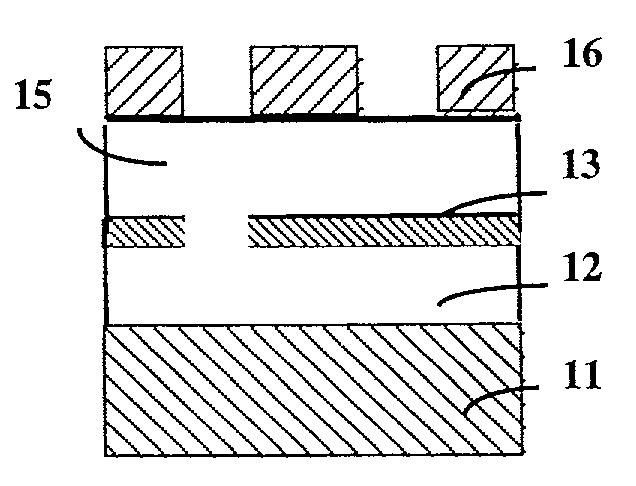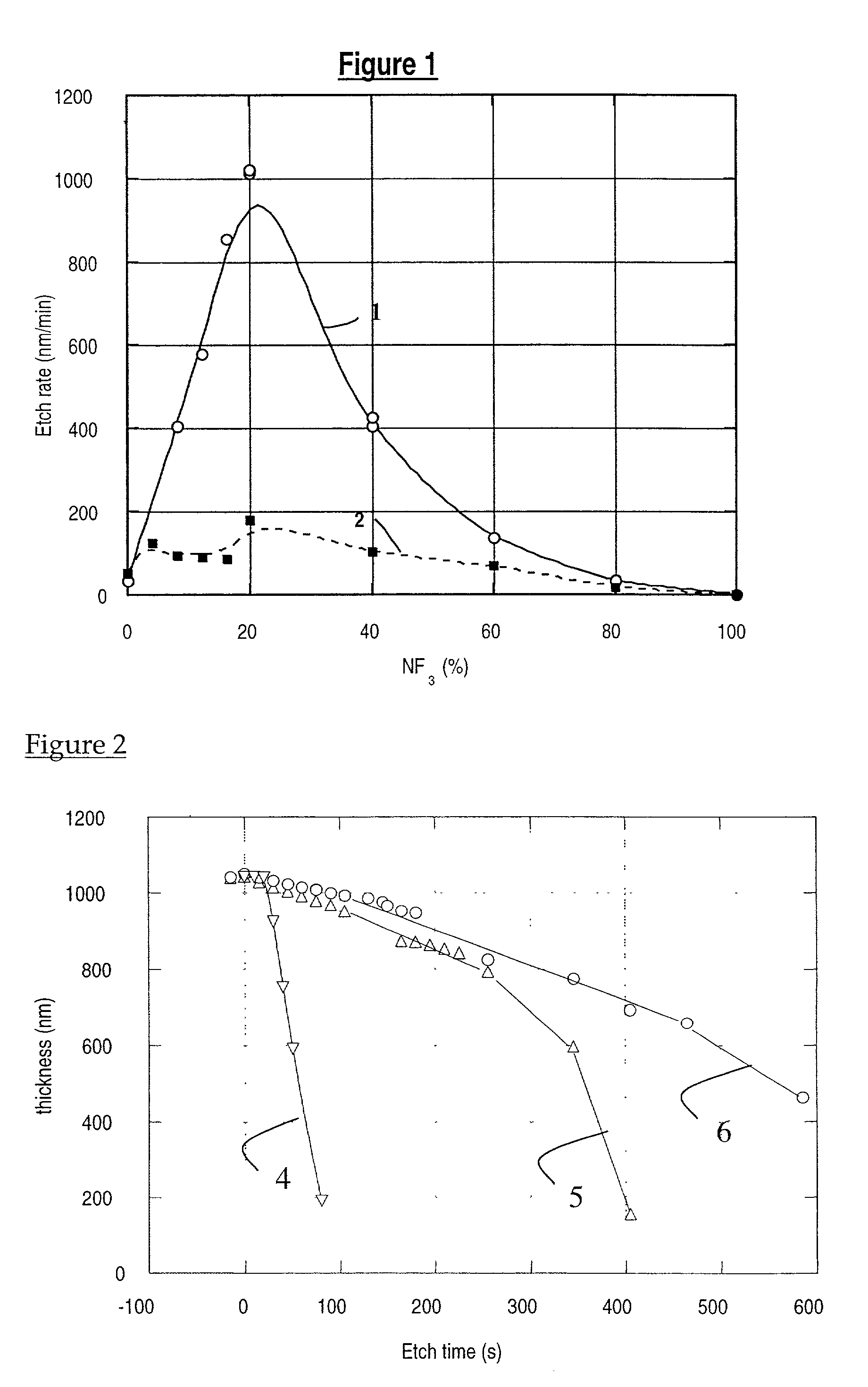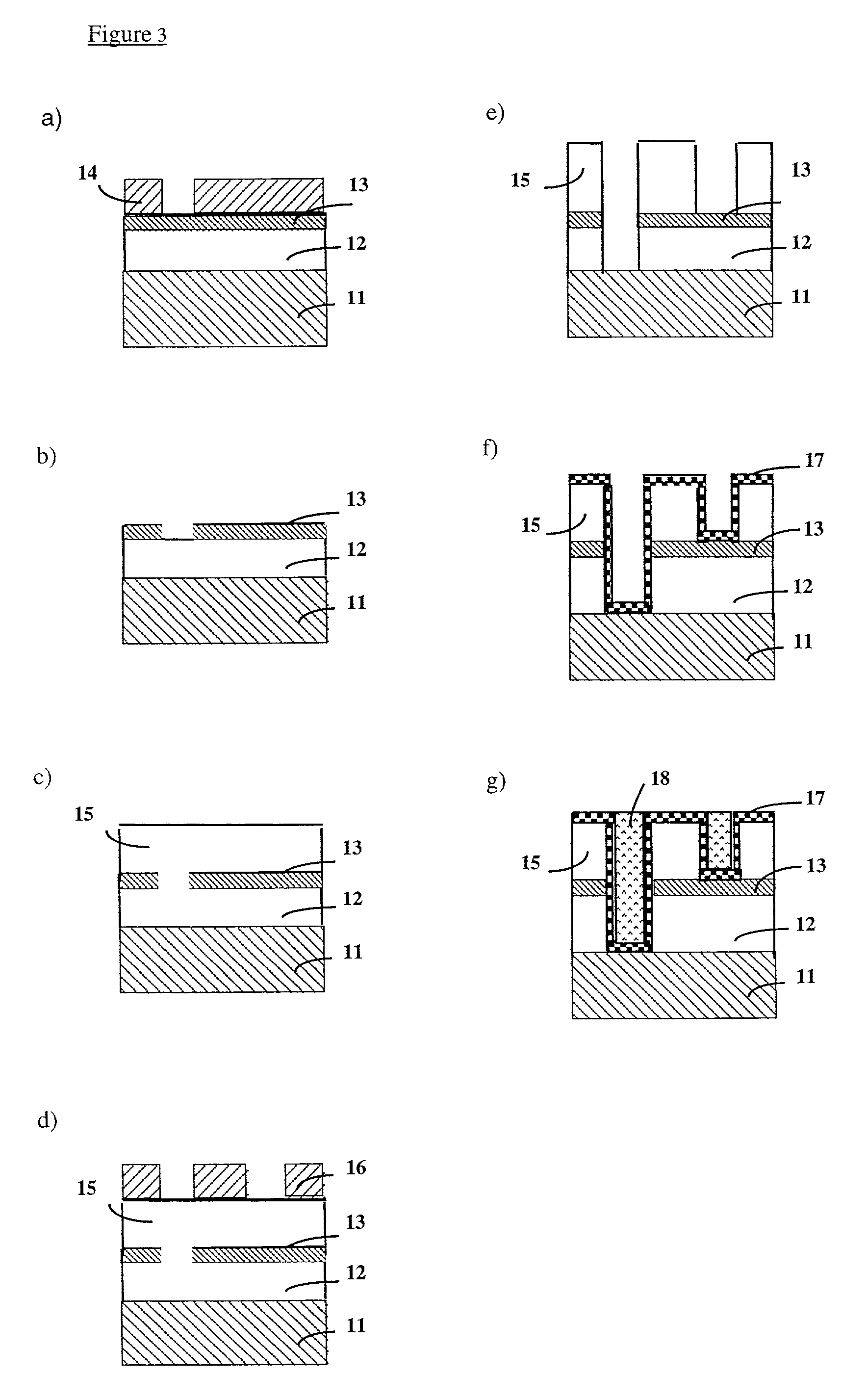Fluorinated hard mask for micropatterning of polymers
a technology of polymer film and hard mask, which is applied in the direction of photosensitive material processing, photomechanical equipment, instruments, etc., can solve the problems of inability to meet stringent specifications, inability to use traditional lithographic resists, and materials that are mostly not compatible with the fabrication process of integrated circuits, etc., to achieve the effect of increasing the chemical resistance of the polymer
- Summary
- Abstract
- Description
- Claims
- Application Information
AI Technical Summary
Benefits of technology
Problems solved by technology
Method used
Image
Examples
Embodiment Construction
[0017]In relation to the appended drawings, the present invention is described in detail. It is apparent, however, that a person skilled in the art can imagine several other equivalent embodiments or other ways of executing the present invention, the spirit and scope of the present invention being limited only by the terms of the appended claims.
[0018]In one aspect of the invention, a method is disclosed to form a hard mask layer in an organic polymer film by modifying at least partly the chemical composition of a first region of an organic polymer film comprising at least one phenyl group. Perferably, the first region is uncovered. If desirable, the first region can also be covered with suitable materials which do not adversely affect the fluorination of the polymer film. This modification is performed by exposing a surface of the organic polymer film to an ambient comprising fluorine substantially without changing the thickness of the first region of the organic polymer film. Phen...
PUM
 Login to View More
Login to View More Abstract
Description
Claims
Application Information
 Login to View More
Login to View More - R&D
- Intellectual Property
- Life Sciences
- Materials
- Tech Scout
- Unparalleled Data Quality
- Higher Quality Content
- 60% Fewer Hallucinations
Browse by: Latest US Patents, China's latest patents, Technical Efficacy Thesaurus, Application Domain, Technology Topic, Popular Technical Reports.
© 2025 PatSnap. All rights reserved.Legal|Privacy policy|Modern Slavery Act Transparency Statement|Sitemap|About US| Contact US: help@patsnap.com



